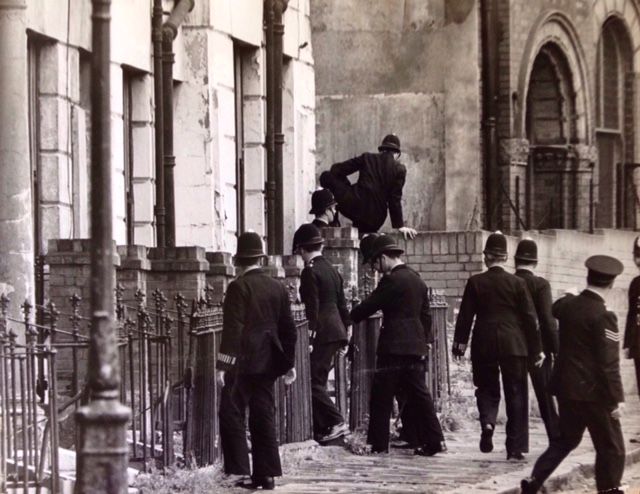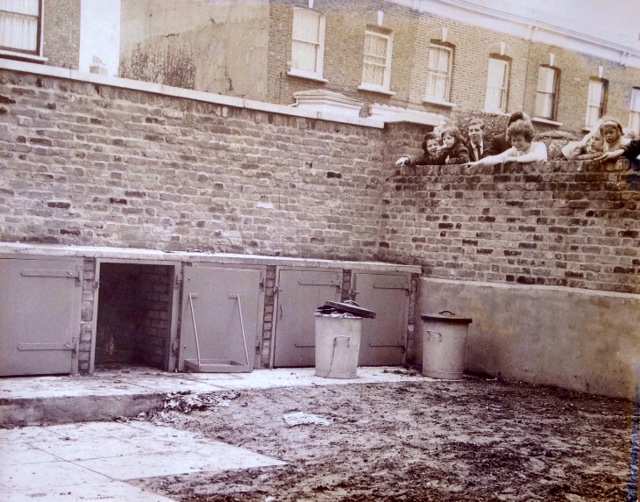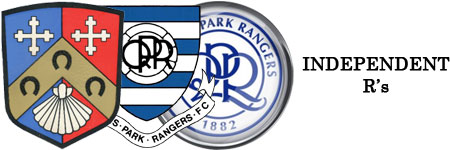In May 1965 three young children went missing in the Paddington District of London. The actual area where this happened was called ‘Maida Hill’, although few, if any locals called it that.
The area was populated mostly by white working class people, with added immigration throughout the 50’s and 60’s of Irish and West Indian manual workers. Many of the Irish workers found work in the Construction Industry, while many of the West Indians found work with London Transport.
Housing was difficult to obtain, and it wasn’t unusual for houses in this area to be occupied by several families. Few had running water, and central heating was almost unheard of. People still had open fireplaces and parafin heaters were popular.
Around this time, local Councils began a programme of building Council Estates and houses. Whole areas of inner London were earmarked slum clearance, including many parts of Paddington.
As a child at the time, I remember my parents and other adults talking about the children that had gone missing. A six-year-old boy, Michael Leigh, Juliana Adebona a seven-year-old and her three-year-old brother David from Errington Road, had simply disappeared while playing out in the street.
In those days it wasn’t unusual for very young children to be outside the house alone. The local streets and bombsites were our playground and the older children kept an eye on the younger ones.
As the days went by there were all sorts of rumours about the missing children, and few thought that they would be found alive.
The police carried out a door-to-door search of the local area, but there was no sign of the children anywhere!

On the south side of Warlock Road, (W9), there was a row of 4/5 houses that were slums, but had recently been refurbished by the Council. The houses were ready for occupation, but had stood empty for a few weeks,
A man walking past the houses thought he had heard a noise, so he opened the gate of one of the houses and went into the ‘yard”. He looked at a row of rubbish bunkers and heard a noise from inside one of them. He opened the door and discovered the three children inside, barely alive, but alive.
There were all sorts of talk about the children being held somewhere else and then dumped there, but I’m not sure that was the case.
The houses were empty. The bunker door could only be opened from the outside. I think the children had crawled into one of the bunkers and the door had shut
behind them. The police assumed that the houses had been searched, when in fact they hadn’t.

In his book, ‘Nipper’ Read, who arrested the Krays, said that he was involved in the search for the children. As a result, he insisted that in any further police searches, buildings that had been searched should be clearly marked with chalk.
A few days after they were found myself and some friends went to have a look at the bunkers. The one that they were trapped in still hadn’t been cleaned out. Even as a youngster, it seemed to me that they had been inside the whole time, (I could be wrong of course).
But if you can imagine the state of a small confined space with three terrified children trapped inside for 4/5 days.well, that’s what I saw.
Steve Zico
I recently acquired the two press pics. shown above. The heading for the top one reads:
‘Inquiries Extended in Hunt for Missing Children’ and then the caption is as follows:
‘Inquiries have been extended in the hunt for the three missing children, Juliana and David Adebona and Michael Leigh, who disappeared last Friday from outside the home in Errington Road, Paddington. Countless people have been interviewed, hundreds of lines of inquiry have been followed up, and reports from all over Britain checked. ‘
Photo shows: ‘Commando police search derelict buildings in Paddington – in the hunt for the missing children.’
The heading for the bottom pic reads: ‘Three Lost Children Found’ and has the following caption:
‘The three Paddington children, Michael Leigh, 6, and his two friends, Juliana Adebona, 7, and her 3-year-old brother David, who have been missing since last Friday, have all been found alive. They were found in a dustbin shed at the back of a house at the corner of Warlock Road and Walterton Road, which was being converted into flats for elderly people.’
Photo shows: ‘View showing people peering over the wall at the dustbin shed in which the children were found today.’
Steve Russell

Good story Steve and a happy ending. I wonder what became of them?
Fascinating story, and thankfully a happy conclusion to it. I was born in Paddington, but moved to the White City at the age of 4 in 1960, as the multi-occupancy house that my family shared with several other people in Senior Street (situated between the Harrow Road and Little Venice) was one of the houses that were to be demolished. I was just that bit too young to have any personal recollections of Paddington, but grew up with a great number of family stories about Paddington. I had never heard this particular story, although it occurred 5 years after my family had moved away. The social make up of the area was just as Steve describes. My mum’s family had lived in Paddington since the 19th Century (I think the establishment of the Metropolitan line from Farringdon to Paddington had something to do with it – as I found census records of a great grandparent living in Farringdon who subsequently moved to Paddington). My dad came over from Cork in the 1950s and worked in the construction industry. I also heard tales from my older brother and sister of playing on the bombsites. Many thanks for this most interesting tale.
I too, like the previous poster, was born in Paddington, at St Marys, but moved to neighbouring Kilburn at an early age.
Born to Irish emigrants, a father who was too fond of the beer, but found Loftus Road a far more rewarding place to spend his Saturday afternoons…. indeed he managed to incorporate both.
Those days, kids played outside, with little or no fear… neighbours would keep an eye. Paddington for me, like the Bush, had history, character, characters.
Indeed as a youngster I too, would often go ‚Äòmissing‚Äô…. riding my 20 inch Raleigh bike to Queen’s Park, Paddington Rec (where I was in ore of the bike racing track) and on to the Chippenham Road where I would subsequently often get lost….. PC plod on more than one occasion had to ride back with me!
Maida Vale, yes, but Maida Hill?
Talk of Errington Road, Warlock Road, and Warlterton Road reminds me of Paraffin City! where I delivered it by the gallon, one on each arm at the age of around 11… it nearly killed me.
The moral of the story, is that the babes got found alive, if not so well…says everything about the people of Paddington.
Warm people with warm hearts who cared about their own…… my paraffin had nothing to do with it…. honest!
Great article TB
Jimmy.
Most people at that time wouldn’t have been aware that they were living in Maida Hill.
It’s the area from Harrow rd down to Chippenham rd. Boardered by Walterton rd in the West, and Marylands rd/Sutherland Ave in the East.
Maida Hill Postal Sorting Office used to be in Lanhill rd, (not sure if it’s still there) opposite the exit to United Dairies
Aah, nostalgia …. it ain’t like it used to be, is it?
I was another Indie R’s reader who lived there, but doesn’t remember the story – mind you, I’d moved back to Harlesden by 1965 and was far more into the explosion of music in the ’60s by then.
Like others, I suspect the “Maida Hill” description is a more-recent invention of imaginative estate agents. To us in the ’50s (when I lived there) it was Paddington, plain and simple – Queens Park ended at 1st Avenue and it was Paddington from there to Paddington Green (almost Edgware Road); proof of that is that Paddington Rec was east of there.
I lived very near Droop Street School – that I attended until 1960 and which, in earlier years, gave us one part of QPR’s origins (the old boys and teachers’ team formed in St Jude’s church hall). Yes, there were many bomb sites artound the area and we used to weander the streets in the morning (going home for lunch) and then again all afternoon – up to Queens Park or the Rec, east to he flea pit (Colloseum) or further and west to Kensal Rise and beyond – though not too far south, perhaps just beyond the canal (was it a sub-conscious fear of getting too close to Chelsea territory or – worse still – South “London”?
Where’s the faith people?
Your old uncle Zico wouldn’t put you on a wrong ‘un.
The fields here attracted little attention until the opening of the Paddington branch of the Grand Union Canal in 1801. Within a few years the first villas were built on Hill House fields – the highest part of Paddington at 120 feet (37 metres) above sea level – together with a pub named the Hero of Maida. The hero was Major-​​General Sir John Stuart, who in 1806 led British troops to victory over a larger French force on the plain of Maida in southern Italy.
By 1810 the locality was being marked as ‘Maida’ on maps. Shortly after this, construction work began on the Regent’s Canal, which branched off from the Grand Junction (now Grand Union) Canal at what is now Little Venice.
The Maida Hill tunnel, begun in 1812, was the first canal tunnel to be built in London and is the second longest, after Islington’s. Its route had to be altered to avoid the Portman estate, which had refused passage through its property.
The part of Edgware Road immediately north of the Regent’s Canal was originally called Maida Hill, and later Maida Hill East, while modern Maida Avenue (now considered part of Little Venice for most of its length) was formerly Maida Hill West.
The joke about how God created Yorkshire – ‘Maida Hill then Maida Vale’ – indicates the order in which the district developed, as the first houses went up here and then spread northwards. These early properties were built in an Italianate style that was distinctively different from the later look of Maida Vale.
In 1868 the whole stretch of the former Edgware Road north of the canal was united as Maida Vale and Maida Hill’s name faded into obscurity for a while. It was later revived to identify the area to the south-​​west of Shirland Road, well to the west of its point of origin. What is now Maida Hill was called St Peter’s Park when it was built up from the mid-​​1860s. It was a squatting hotspot in the 1970s and is now popular with young singles.
The author Wilkie Collins entered Maida Hill Academy in 1835.
In Graham Greene’s novel Loser Takes All, Bertram plans to get married at the fictional church of St Luke’s, Maida Hill, but trouble ensues when the wedding is switched to Monte Carlo.
Pre-‚Äã‚Äãpunk rockers the 101ers, who mutated into The Clash, took their name from the house number of their squat in Walterton Road, now replaced by a low-‚Äã‚Äãrise block of flats. The band played a weekly residency at the nearby Chippenham public house.
Postal district: W9
i lived at number 66 Warlock Road. I was 4 at the time of the disappearance and remember the incident believe it or not. In those day we all slept in the one bedroom, my mum, dad, sister and myself. I remember my mum waking my dad up saying she could here crying children during the night. She did contact the police and the children were found the next day. We didn’t have mobiles in those days so it was a walk upto Harrow Road Police Station .